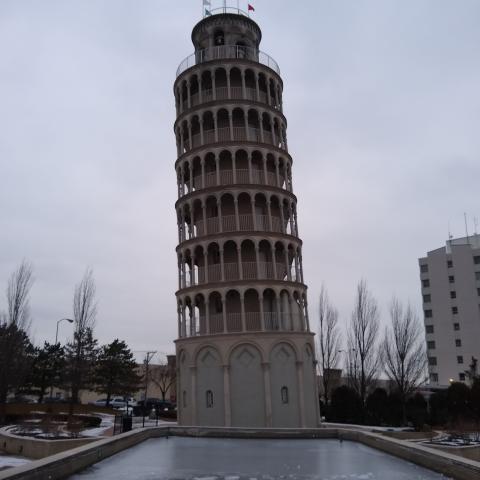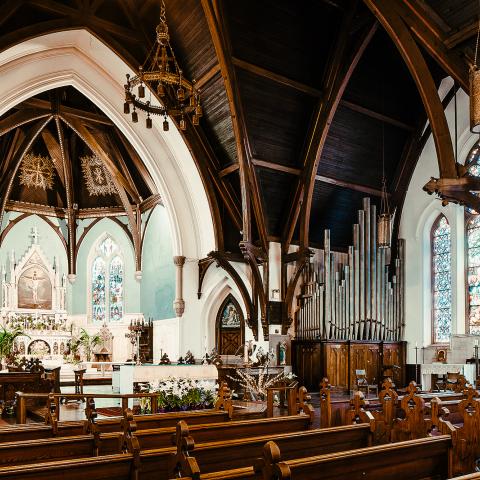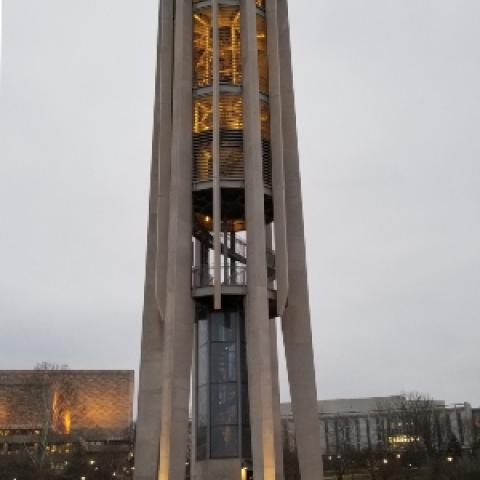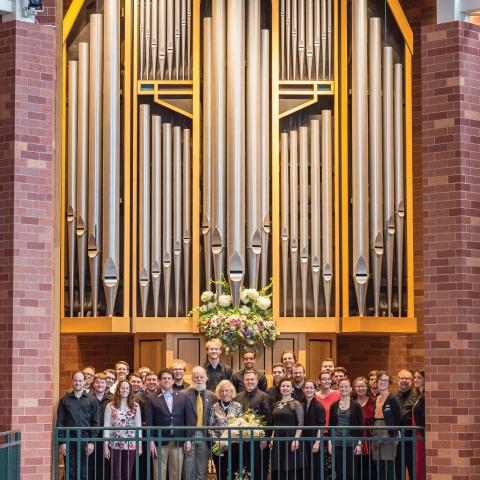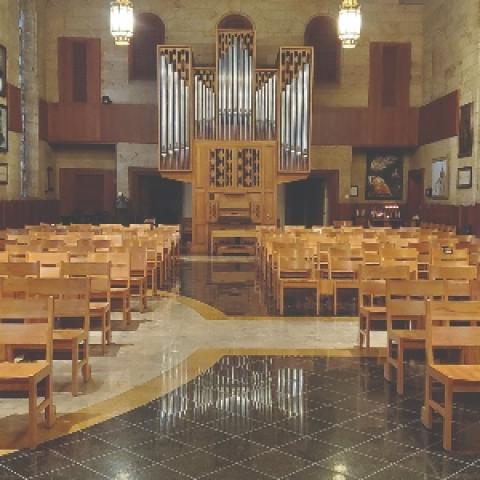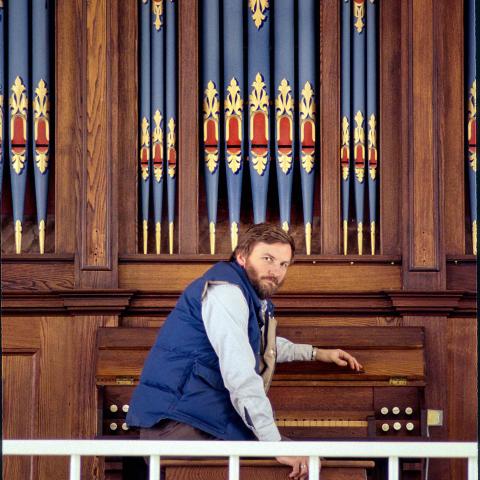Brian Swager, DM, is an organist, carillonneur, and harpist in San Francisco, California. He is director of music at Immanuel Lutheran Church in San Jose. He serves as contributing editor for carillon topics to The Diapason.

The Whitechapel Bell Foundry in London, England, is a cultural heritage asset of international significance. However, it is at grave risk of being renovated into a “bell-themed” boutique hotel and café rather than being retained as a fully working bell foundry on the site that was developed for this purpose in the 1740s. If this is allowed to happen, the bell founding skills on this historic site in the East End of London will be lost to the nation forever, bringing an end to a continuous history of bell casting covering the last 450 years. This is a matter of national and international importance.
For the last few years I have read reports of the imminent closure of the firm. However, a Public Inquiry called by the Secretary of State has been scheduled for October 2020, offering real hope of saving the foundry. The UK Historic Building Preservation Trust—whose founding patron was HRH The Prince of Wales and is now called Re-Form Heritage—launched a joint appeal with the Factum Foundation for Digital Technology in Conservation to save the foundry. The many objectors, of which there were nearly 26,000, believe strongly that the site of the Whitechapel Bell Foundry should be a place of pilgrimage, preserving this important heritage. I contacted Adam Lowe, director of the Factum Foundation, who has supplied much of the information for this article.
Whitechapel bells hold an enviable place in English history. The first recorded bells to have been cast in London were made in Whitechapel in the thirteenth century; bells have been made by the foundry since 1570, and on the current site on the corner of Whitechapel Road and Plumber’s Row since the 1740s. The Whitechapel Bell Foundry adopted its current name in 1968, but the same purpose-built foundry has been occupied by generations of bell makers—Phelps and Lester, Lester and Pack, Pack and Chapman, Chapman and Mears, Mears and Stainbank, Alfred Lawson, and since 1904 several generations of the Hughes family—with knowledge passing from one generation to the next, each of them forming a part of this extraordinary history.
Located in the Borough of Tower Hamlets in the heart of London, the renowned foundry is Britain’s oldest single-purpose industrial building. The bells cast here are the voices of nations: they mark the world’s celebrations and sorrows, representing principles of emancipation, freedom of expression, and justice. Both Big Ben and the Liberty Bell were cast on this site.
In June 2017, the historic Whitechapel Foundry was sold to a developer, and the use of these Grade 2* buildings for the making of bells ceased. Grade 2* is a classification of a UK building that is “particularly important . . . of more than special interest.” Although the foundry had been listed for its historic connection to the East End’s industrial past and despite campaigns in the national press and emotional public outcry, it was shut down by the owners who wanted to take advantage of the enormous increase in its financial value by selling it for conversion into a hotel.
Raycliff, an American venture capitalist firm, purchased the foundry. Raycliff Whitechapel LLP has submitted a planning application that seeks to secure a change of use and development of the site as a 100-bed hotel, private members’ club, restaurant, bar, café, and shop, with desk-sharing workspaces for hire. The on-site foundry outlined in the Raycliff Whitechapel proposal has been reduced dramatically, and all that remains is a token activity—a small display workshop and studio for casting or finishing handbells within a restaurant and café.
In November 2019, the Tower Hamlets Development Committee approved the developer’s planning application. In December of last year, in response to public pressure, the Secretary of State, Robert Jenrick, issued a holding declaration preventing Tower Hamlets Council from proceeding and granting planning permission. The planning application has now been “called in,” and a public inquiry will be held on October 6, 2020, lasting for about one week. This gives the opportunity for a fair and proper hearing with legal representation.
A foundry of worldwide stature
The foundry in Whitechapel has supplied a striking array of bells to churches around the globe as well as a number of significant and well-known installations. In addition to the Liberty Bell and Big Ben, the foundry has produced several other bells of national significance. Near the White House, in the Old Post Office and Clock Tower in Washington, D.C., is a ring of ten pealing bells, used for change ringing, called “The Bells of Congress.” Cast by Whitechapel in 1976, the bells range in weight from 581 to 2,953 pounds. Another Whitechapel ring of ten bells hangs in the tower of the Washington National Cathedral. Cast by Mears & Stainbank in 1962, the bells range from 608 to 3,588 pounds.
Commissioned and cast for the 2012 London Olympic Games, the Olympic Bell is the largest harmonically-tuned bell in the world. It was designed by Whitechapel, but due to its excessive size (22.91 tons, 10.95 feet in diameter), it was cast at the Royal Eijsbouts foundry in the Netherlands. It bears an inscription taken from Shakespeare’s play The Tempest: “Be not afeard; the isle is full of noises.”
In celebration of the 1976 United States Bicentennial, the people of Britain gifted the people of this country with a 12,446-pound Bicentennial Bell cast by Whitechapel. It was dedicated by Her Majesty Queen Elizabeth II who shared her gratitude to America’s Founding Fathers for teaching the British “to respect the right of others to govern themselves in their own way.”
Various chimes and rings made in Whitechapel were sent to places near and far beyond England’s borders including Wales, Scotland, Zimbabwe, South Africa, India, Trinidad, Malawi, Sudan, and Jamaica. No less than twenty-three sets of Whitechapel bells made their way to Canada, forty-four to Australia, four to New Zealand, and at least sixty-two sets to the United States. Several of their chimes were later enlarged to carillons. Fifty-eight of the seventy-four bells in the Laura Spelman Rockefeller Memorial Carillon in the Riverside Church in New York City were recast or replaced by Whitechapel in 2003. It is no wonder that their website proclaimed: “the world’s most famous bell foundry.”
The business owner Alan Hughes cited financial difficulties with maintenance of the building in the current economic climate. “The future of bell making is bright” maintains Adam Lowe of the Factum Foundation. He notes that churches are no longer the main commissioners of bells, yet the market is diversifying, and new opportunities exist around the world. Likewise, technological advances must be applied that would bring the foundry into the twenty-first century.
A viable future for the foundry
Re-Form Heritage and the Factum Foundation have led the opposition to the redevelopment plans. Together with the local community, former employees of the bell foundry, the Victoria and Albert Museum, B-Made (Bartlett Manufacturing & Design Exchange—a multidisciplinary center that aims to foster the next generation of thinkers, designers, and makers), University College London, the East London Mosque, artists, and others, they are proposing a viable future answering local and international needs: a working foundry specializing in the production of bells and works of art, together with a 3-D and acoustic archive and research center that will conduct bell recording, undertake research into historic casting methods, and develop machine learning predictive software to assist in the preservation of bells around the country and beyond.
There is a clear need for such services. Maintaining and re-making bells for churches is a relatively contained market in Europe and North America, but it serves an important social and preservation function. By contrast, there is a significant market for commemorative bells of all sizes and for bell-related artist projects. Internationally, Russia, Africa, and South America have been identified as expanding markets for church bells, while China and India have a large and growing demand for bells and gongs.
Technology has the potential to revitalize bell making in Whitechapel. Three-dimensional recording, digital modeling, machine learning analysis, and the use of software to predict and control shrinkage, flow, thickness, and shape are all part of this future. The new foundry will also be eco-friendly, filtering emissions and recycling heat. As has been demonstrated by Peter Scully, there are no issues with casting bells safely in London in a workshop that meets health and safety and the most challenging sustainability legislation: in December 2019, Scully and assistants at B-Made cast three bells in front of a group of journalists and supporters using ceramic shell investment molding and a new efficient electric kiln; the result was an unmitigated success.
Historical research leading to technological advances
The scene of bell making in Andrei Tarkovsky’s masterpiece film Andrei Rublev depicts a human skill that has been passed down in Europe, almost unchanged, from generation to generation since the Middle Ages. In China its history is much longer, going back to around 2000 BCE. There is a profound need to document this history and to preserve and archive the achievements of this proud technological tradition within the UK and beyond. To this end, the partnership between Re-Form Heritage and the Factum Foundation will conduct extensive research into historic bronze casting technologies and will establish an archive focused on the history of bell founding, to include acoustic recordings and high-resolution 3-D models in addition to more traditional modes of documentation. This research and the accompanying archive will form a key resource as the revitalized bell foundry works on the preservation, monitoring, and analysis of historic bells.
Historical documentation will also inform research into the production of new bells. In February 2020, an early seventeenth-century church bell from near Salamanca, Spain, was 3-D recorded by a team of experts from Factum Foundation. The technique used was photogrammetry, which involves taking multiple photos of an object (often hundreds or even thousands) that can then be converted into a 3-D digital model using software. The Salamanca recording and others like it will form the basis of an archive of photogrammetric recordings of different bells, facilitating a study of the relationship between the composition of bell metal, shape, and sound. Building on this information, it will soon be possible for bell making to enter a new phase, in which mathematical modeling and new methods of precision fabrication are combined with the knowledge and experience of traditional bell founders.
Following the 3-D recording of the bell, a research project is now underway to carry out data processing using MagmaSoft, an advanced software that can predict flow and shrinkage. Once the analysis has been carried out, the data will be distorted. A 3-D print will be made so that after molding and casting, the bell will be the exact shape and size of the original bell. The casting is being done at Pangolin Foundry in Gloucestershire using a mix of bell metal with a high tin content. Arthur Prior is undertaking the digital analysis of the data in Nuremberg, and Nigel Taylor is advising on the production of the alloy, the temperature of the casting, and the speed of cooling. It is hoped that the new version of the Salamanca bell will sound similar to the original, even before fine tuning.
A further digitization project that has shown the possibilities of digital recording of bells is the scanning of the so-called “Cellini Bell.” This 13-centimeter-high silver bell was made ca. 1550 by the Nuremberg goldsmith Wenzel Jamnitzer, although for a long time it was attributed to the Italian Renaissance master Benvenuto Cellini. Once an important item in Horace Walpole’s collection at Strawberry Hill House, it now forms part of the Rothschild Bequest at the British Museum. The bell is covered with intricate relief-work that includes flowers, lizards, and insects, many of which were cast directly from life.
The Cellini Bell was recorded by Factum Foundation using close-range photogrammetry, a task that posed particular challenges specific to this complex object. The level of detail on the bell meant that it required many photographs, taken with a great degree of precision, and in order to accurately record the partially reflective surface of the silver, it was necessary to conduct the recording twice, once using the standard lenses employed by Factum for photogrammetry of this sort, and once employing cross-polarization to reduce the glare from the object. The two models were then combined, resulting in a 3-D model with 91.5 million polygons. This was then 3-D printed and silver plated, resulting in an exact facsimile that is now on permanent display at Strawberry Hill House.
It was during the process of recording the Cellini Bell in 2018, while Factum Foundation was also working to save the bell foundry at Whitechapel, that the role of machine-learning software and new casting technologies for the production of bells became apparent. This was then put to the test in December 2019 at B-Made in Here East, a media complex located in the Olympic Park in East London, not far from the Whitechapel Bell Foundry.
The proposed Elizabeth bell
Many of the great moments in England’s history since 1570 have been celebrated by the tolling of bells founded at Whitechapel. The coalition proposes that the nation should now celebrate the reign of Elizabeth II, their longest serving monarch, with the founding of a bell. Once the London bell foundry has been established as a trust and has reacquired the foundry at Whitechapel, the first commission the trust hopes to carry out is the founding of the Elizabeth Bell, a new quarter bell for the Elizabeth Tower at the Palace of Westminster, of which Big Ben is the great bell. The bell will be funded by public donations and will require the support of the royal family and the government.
A viable future
The coalition proposal is supported by the local community, the East London Mosque, politicians at local and national levels, the Victoria and Albert Museum, and the Bartlett School of Architecture; by heritage bodies including the Society for the Protection of Ancient Buildings (SPAB), Spitalfields Trust, and SAVE Britain’s Heritage; by the blog Spitalfields Life (which has published extensively on the history of the foundry and on this campaign), by architectural historian Dan Cruickshank, former Royal Academy Chief Executive Charles Saumarez Smith, academics, makers, musicians, and artists including Michael Nyman, Antony Gormley, Anish Kapoor, and Grayson Perry. While this is a local issue it has global implications, and there have been offers of support from China, Australia, and the United States. Mainstream and social media have shown a huge interest, and articles have appeared in Financial Times, The Daily Mail, Evening Standard, The Guardian, and The Economist, among other publications.
Speaking of his enthusiasm for the Re-Form/Factum proposals, former Tory leadership candidate and mayoral candidate Rory Stewart said:
All of this, in one of the most interesting parts of our city . . . . An imaginative planner—in fact anyone with any imagination seeing the possibilities here—could not possibly turn this down. This is a challenge of courage, it’s a challenge of joyful imagination.
About Factum Foundation
Factum Foundation for Digital Technology in Conservation is a not-for-profit organization founded in Madrid to document, monitor, study, recreate, and disseminate the world’s cultural heritage. It works alongside its sister company, Factum Arte, a multi-disciplinary workshop dedicated to digital mediation and physical transformation in contemporary art, and the materialization of diverse types of object. Activities include building digital archives for preservation and further study, creating and organizing touring exhibitions, setting up training centers to enable colleagues across the world to record their own cultural heritage, and producing exact facsimiles as part of a new approach to conservation, restoration, and display. Factum Arte works with foundries in Spain, England, and Greece, casting many alloys and developing innovative connections between digital input and physical output.
Call to action
For those interested in supporting this initiative, Adam Lowe suggests a number of ways to be of assistance.
Visit and share the Save the Whitechapel Bell Foundry website with others: savethewhitechapelbellfoundry.com. Here you can sign a petition to register support. By clicking on “Donate,” one will be redirected to Re-Form’s website where it is possible to make a donation in any amount, if desired.
Further information is available on “Spitalfield’s life,” the blog devoted to life in the East End: spitalfieldslife.com
Visit Factum Foundation’s online page and see the development of the fight to keep the site as a working bell foundry: factumfoundation.org/ind/180/the-resurrection-of-the-whitechapel-bell-foundry.
We are also looking for people in historic and preservation societies who are interested in learning how new technology can help create an archive of various types of information that will help revitalize interest in bells, their production, and their digital and physical restoration. Support is needed to build a network that will allow these noble objects to be valued and appreciated. Write to: info@factumfoundation.org.

